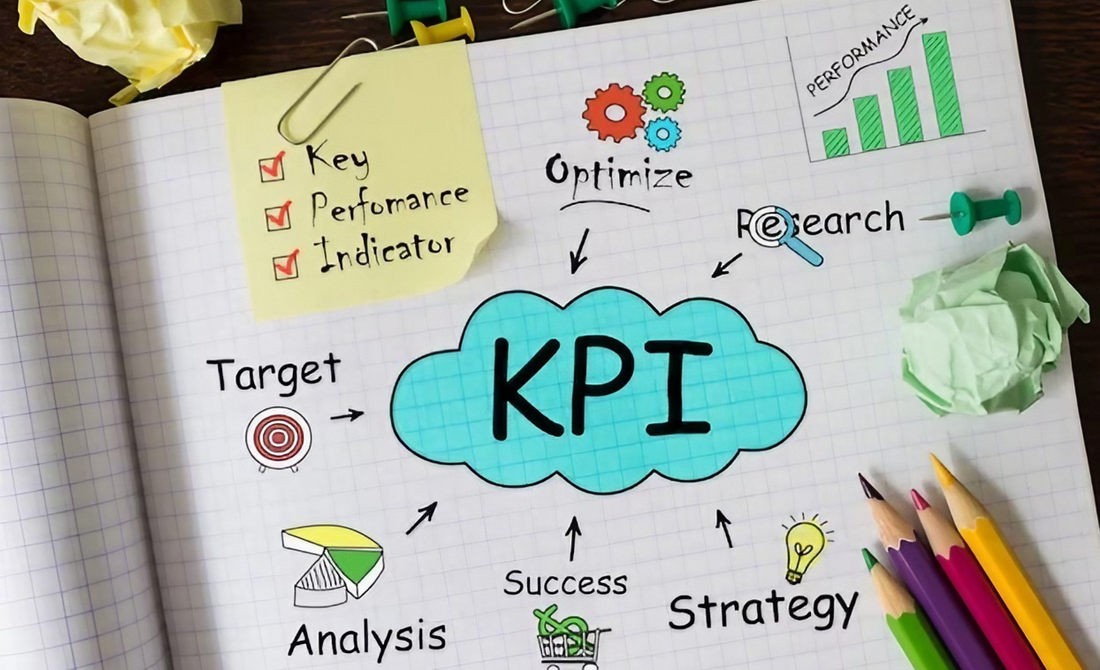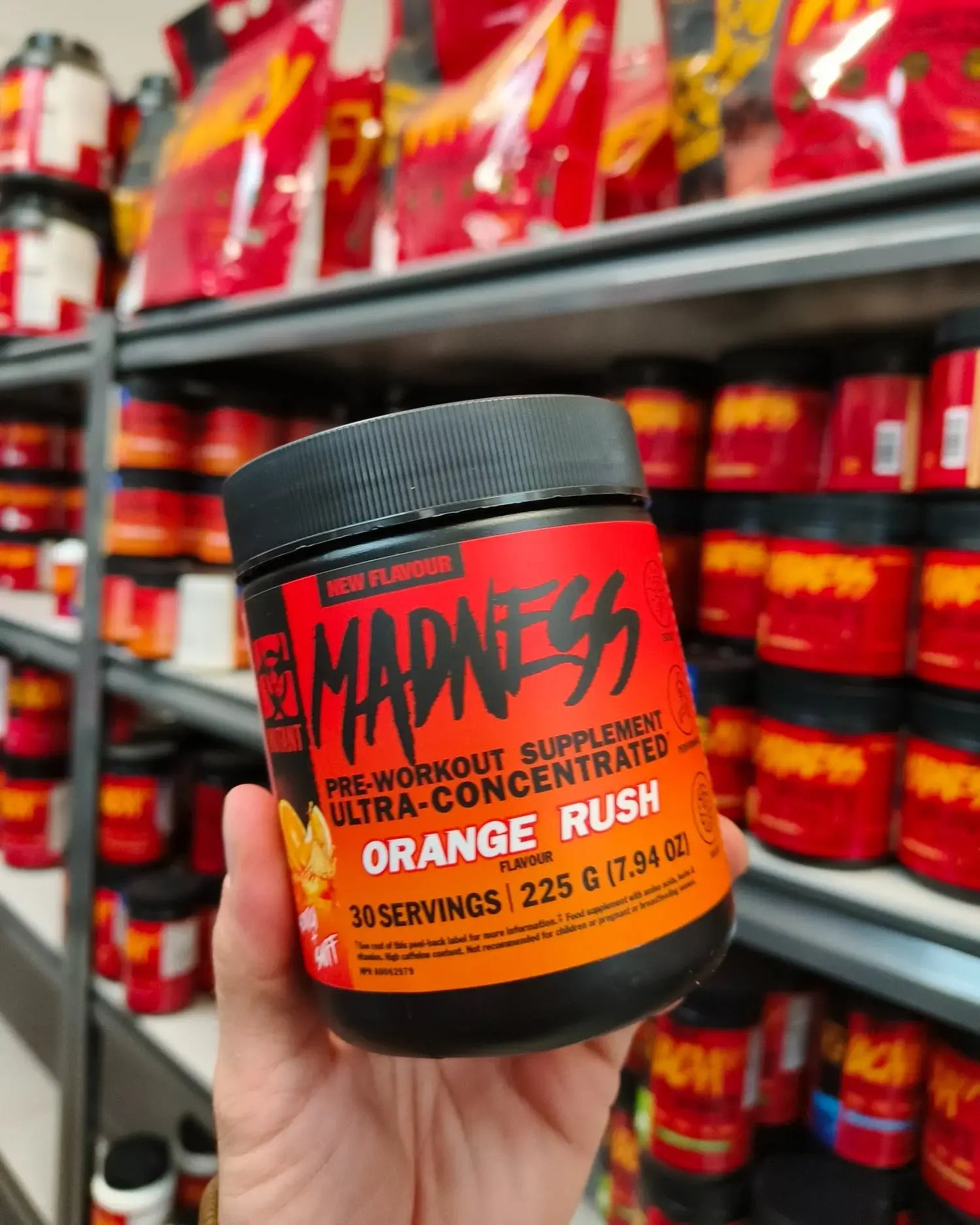10 Essential KPIs Every Ecommerce Business Should Track
ecommerce experience
ecommerce Strategies

Running an ecommerce store might seem easy - list your products, attract users, and watch the sales roll in. But in reality, it’s a dynamic industry with fierce competition.
With over 2.4 billion people shopping online and e-retail sales hitting a staggering $4.2 trillion, the stakes are high.
Well, the success of your store depends more than just having an amazing store - it’s about knowing what’s working and what isn’t.
That’s where tracking the right Key Performance Indicators (KPIs) comes in.
Similar to a compass, these metrics help you remain ahead of the competition, optimize performance, and guide your decisions. But not all metrics are created equal—some provide actionable insights, while others are mere distractions.
In this blog we will talk about 20 major KPIs every ecommerce business should track to drive growth, maximize profits, and make smarter, data-driven decisions.
Let’s start.
- Understanding The Meaning of Key Performance Indicators (KPIs)
- Top Key Performance Indicators (KPIs) For Your Ecommerce Store
- How To Choose Which Ecommerce KPI Is Relevant For You?
- Frequently Asked Questions
Understanding The Meaning of Key Performance Indicators (KPIs)
Suppose you are driving a car without a dashboard—no speedometer, no fuel gauge, nothing to tell you how you're doing or where you're heading. Running an ecommerce store without understanding your KPIs is pretty much the same thing.
KPIs are essentially the lifeblood of your business, offering you critical insights on your store and how it is performing.
In the fast-growing e-commerce industry, which is projected to hit a staggering $7.4 trillion in sales within the next few years, keeping a close eye on your KPIs is non-negotiable.
Whether it’s net profit, average order value, or customer retention rate, these indicators highlight what’s working and what needs tweaking.
Top Key Performance Indicators (KPIs) For Your Ecommerce Store
So, what are the key KPIs that will help your business stay on top? Let’s check them out.
Total Sales: It's the big one! Monitoring your overall sales allows you to get a quick overview of the performance of your company. Keep an eye on your sales by day, week, month, or year to spot trends and understand patterns of growth.
Average Order Size: This KPI, which is often referred to as the "average market basket," shows you how much a customer spends on a single order. It is essential for determining whether or not customers are making more or less purchases over time.
Gross Profit: After deducting the cost of goods sold (COGS), your gross profit is the amount of money you make from sales. It’s essential for understanding how efficiently you’re operating.
Average Margin: Your profit margin for a specific time period is indicated by this percentage. A higher margin means you’re keeping more revenue from each sale.
Average Order Value (AOV): AOV helps you understand how much each customer spends on average. Higher AOV usually means your pricing strategy and upselling tactics are on point.
Customer Retention Rate: Loyal customers are key to sustained growth. This KPI tracks the percentage of repeat customers, which shows how satisfied and engaged your audience is.
Number of Transactions: This is the total number of purchases made. Combine it with AOV and you can gauge both customer activity and sales performance.
Customer Lifetime Value (CLV): CLV measures the total revenue a customer will generate over their relationship with your business. It’s crucial for building long-term strategies focused on customer loyalty and retention.
Revenue Per Visitor (RPV): This metric tells you how much a customer spends on average during a visit to your site. If this number is low, consider optimizing your site’s user experience to encourage higher spending.
Churn Rate: For subscription-based businesses, churn rate is a vital metric. It tells you how many customers are leaving your brand. Lower churn rates are a sign of satisfied, loyal customers.
Customer Acquisition Cost (CAC): This tracks how much you spend to acquire a new customer. Keeping this number low while increasing customer retention ensures you’re growing sustainably.
Website Traffic: The first and most evident KPI is website traffic. It informs you of the number of visitors to your website, and this figure is frequently closely related to the effectiveness of your marketing initiatives.
New Visitors vs Returning Visitors: While first-time visits are amazing, recurring visitors exhibit a higher degree of interest. They're returning for more, which is frequently a sign that your marketing strategies are working. You can determine whether your website is drawing in the correct kind of visitors by monitoring this ratio.
Time on Site: This KPI reveals how long visitors spend on your site, which can give you insights into user engagement. A longer time spent usually indicates that your content is resonating with users.
Bounce Rate: A high bounce rate means visitors leave your site after viewing just one page. This can signal problems like slow loading times, irrelevant content, or poor user experience. If your bounce rate is high, it’s time to dig deeper into what might be pushing visitors away.
Cost per Click (CPC): CPC measures how much you’re paying for each click on your paid ads. If your CPC is high, it might signal inefficiency in your ad targeting or copy. Keeping an eye on this metric ensures you’re getting the best return on investment for your paid campaigns.
Also read: How to set the perfect Google ads budget in 2025.
Pay-Per-Click (PPC) Traffic Volume: If you’re running PPC campaigns, you’ll want to track how much traffic your paid ads are generating. The higher your PPC traffic volume, the better your ads are performing.
Conversion Rate: Last but certainly not least, your conversion rate measures how many visitors actually make a purchase or complete a desired action. Improving your conversion rate means your site and marketing efforts are working to turn interest into sales.
Average Click-Through Rate (CTR): The average CTR shows how often people click on your ads, social media posts, or other marketing materials. A higher CTR often means that your content is resonating with your audience and driving traffic to your site.
Clicks: This KPI tracks the number of clicks you get on any link, whether it’s on your website, a social media post, or an email campaign. More clicks generally mean higher interest and engagement with your content.
| KPI | Description | How To Calculate |
| Total sales | The total revenue from all sales. This helps you understand your overall performance. | Add up all sales over the specified period (day, week, month, year). |
| Average order size | Shows how much a customer spends on a single order. This indicates whether customers are making larger or smaller purchases. | Total sales ÷ Number of orders. |
| Gross profit | The amount made from sales after deducting the cost of goods sold (COGS). Indicates operational efficiency. | Total revenue - Cost of Goods Sold (COGS). |
| Average margin | The percentage of profit you make on a product or service after the cost is deducted. | (Gross Profit ÷ Revenue) × 100 |
| Average order value | The average amount spent per order, useful for pricing and upselling strategies. | Total revenue ÷ Number of orders. |
| Customer retention rate | Tracks the percentage of customers who return to make purchases again, indicating loyalty. | ((Customers at the end of the period - New customers during the period) ÷ Customers at the start of the period) × 100. |
| Number of transactions | The total number of purchases made. Tracks customer activity and sales performance. | Count the total number of transactions over the period. |
| Customer lifetime value (CLV) | Calculates the total revenue a customer is expected to generate throughout their entire relationship with your business. | Average order value × Number of transactions per year × Customer lifespan (in years). |
| Revenue per visitor (RPV) | The average amount spent per visitor, helping to gauge site performance and user engagement. | Total revenue ÷ Total number of visitors. |
| Churn rate | The percentage of customers who stop using your service, crucial for subscription-based businesses. | (Customers lost during a period ÷ Customers at the start of the period) × 100. |
| Customer acquisition cost (CAC) | The cost of acquiring a new customer, crucial for sustainable growth. | Total marketing and sales expenses ÷ Number of new customers acquired. |
| Website traffic | Tracks the total number of visitors to your website, a key indicator of your marketing success. | Use analytics tools (e.g., Google Analytics) to track visits to your website. |
| New visitors vs returning visitors | Compares new vs. returning visitors to evaluate the effectiveness of your marketing campaigns. | Compare the number of new vs. returning visitors using Google Analytics or similar tools. |
| Time on site | Indicates how much time visitors spend on your site. Longer time usually signals higher engagement. | Average time spent on the site per visit, measured in Google Analytics or similar tools. |
| Bounce rate | The percentage of visitors who exit the site after viewing just a single page. A high rate could signal issues with content or UX. | (Single-page sessions ÷ Total sessions) × 100. |
| Cost-per-click (CPC) | Measures how much you pay for each click on your paid ads, an important metric for paid advertising campaigns. | Total advertising spend ÷ Total clicks on ads. |
| Pay-per-click (PPC) | Tracks the amount of traffic driven by paid ads. | Track total visits generated by PPC ads through Google Analytics or other tools. |
| Conversion rate | It tracks the percentage of users who complete a specific desired action. | (Total conversions ÷ Total visitors) × 100. |
| Average click through rate (CTR) | Shows how often people click on your ads, social media posts, or other content. A higher CTR usually signals effective content. | (Total clicks ÷ Total impressions) × 100. |
| Clicks | Tracks the total number of clicks on a link, whether from ads, social media, or email. More clicks generally indicate higher engagement. | Count the total clicks on links from your campaigns. |
How To Choose Which Ecommerce KPI Is Relevant For You?
Choosing the right ecommerce KPI (Key Performance Indicator) is like charting a course for your success—it’s essential to know exactly where you’re headed before deciding how to measure your journey.
Let us go through the steps to understand how you can choose the right KPI for your ecommerce store.
Define Specific and Clear Goals
A clear understanding of your ecommerce goals is the first step in selecting the appropriate KPI. Avoid ambiguous goals like "increase traffic" and aim for accuracy instead. For example, say you want to "reduce customer churn by 20% in a quarter" or "boost organic traffic by 50% within six months."
Being specific helps you stay focused and measure performance efficiently.
Match Goals to Relevant KPIs
Not every metric is made equal. Select KPIs that are directly related to your goals. For instance, monitor subscriber acquisition rates rather than bounce rates if the aim is to grow your email list.
Prioritize KPIs that accurately show your progress towards your goals over vanity metrics that appear great but provide little useful information.
Ensure KPIs Meet Key Criteria
Select KPIs that are:
- Measurable: Can you calculate them accurately?
- Timely: Are they updated regularly and in real-time?
- Actionable: Do they guide you on what steps to take next?
- Relevant: Are they tied directly to your specific goals?
Track Progress Consistently
Track your KPIs from the very beginning to collect enough information for analysis. Use tools like Google Data Studio to visualize trends and progress. Regular monitoring will allow you to identify trends and enhance your strategies.
Iterate and Adapt
KPIs aren’t static. Review them every few months to make sure they continue to be compatible with changing business goals.
Don’t hesitate to adjust your metrics or replace them as your priorities shift. A flexible approach keeps your strategy dynamic and results-driven.
Frequently Asked Questions
What is ecommerce performance?
Ecommerce performance refers to how effectively an online store meets its business goals, such as generating sales, attracting traffic, and enhancing user experience. Key metrics like conversion rates, website traffic, and customer retention help assess this performance.
Which KPI indicates the average amount spent per order by a customer?
The Average Order Value (AOV) KPI indicates the average amount a customer spends per order. It is calculated by dividing total revenue by the number of orders, helping businesses assess pricing strategies and customer purchasing behavior.
How many KPI should you have?
The number of KPIs you should have depends on your business goals, but generally, 5-10 key metrics are recommended. Focusing on a manageable number ensures you can effectively track performance without getting overwhelmed by excessive data.
CrawlApps
At CrawlApps, we don’t just build Shopify stores—we create experiences that sell. We’re a bunch of problem-solvers who love turning ideas into stores that actually converts. Whether it’s fixing what’s broken or building something from scratch, we make sure every detail works in your favor. No fluff, no jargon—just real solutions that help your business grow. If you’re serious about Shopify, you’ll feel right at home with us.















